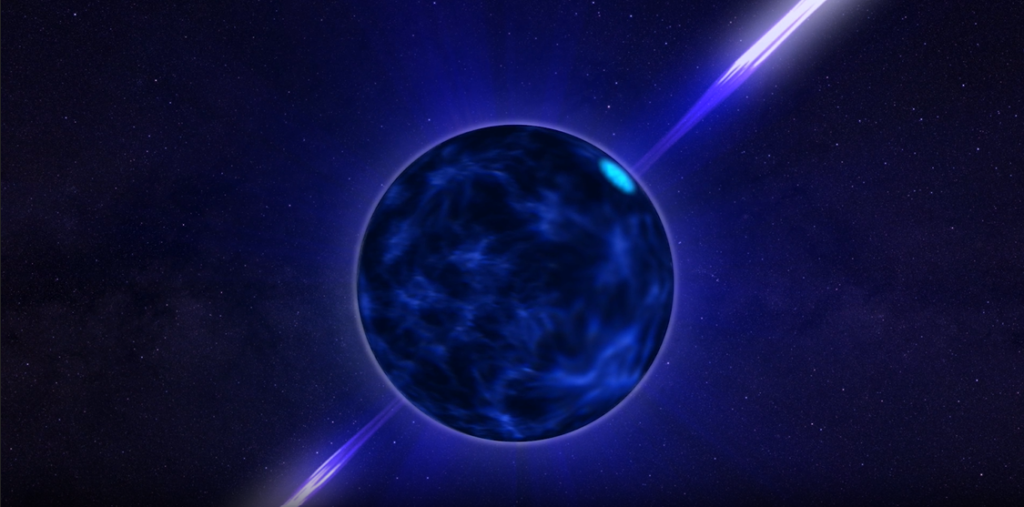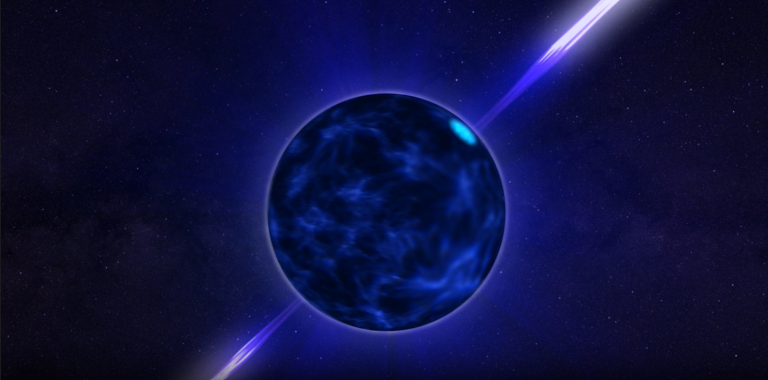Fermi Discovers Over 300 Gamma-Ray Pulsars
In June 2008, the Gamma-ray Large Area Space Telescope embarked on a mission to explore some of the most energetic phenomena in the Universe. Shortly thereafter, NASA rechristened the observatory as the Fermi Gamma-ray Space Telescope in homage to Professor Enrico Fermi (1901-1954), a trailblazer in high-energy physics. Throughout its mission, Fermi has delved into inquiries surrounding enigmatic and high-energy cosmic phenomena such as gamma-ray bursts (GRBs), cosmic rays, and densely packed stellar remnants like pulsars.

Since its inception, Fermi has unearthed over 300 gamma-ray pulsars, offering fresh perspectives on the life cycle of stars, our galaxy, and the fundamental nature of the Universe. A new catalog released this week by an international consortium encompasses the 300-plus pulsars identified by the Fermi mission, comprising 294 confirmed gamma-ray-emitting pulsars and an additional 34 candidates awaiting verification. This remarkable tally surpasses the number of pulsars known to astronomers by a factor of 27 before Fermi’s launch in 2008.
The collaborative effort involves 170 scientists from institutions worldwide, including the French National Center for Scientific Research (CNRS), the Netherlands Institute for Radio Astronomy (ASTRON), the Istituto Nazionale di Fisica Nucleare (INFN), the Kavli Institute for Particle Astrophysics and Cosmology, the National Institute for Astrophysics (INAF), the South African Radio Astronomy Observatory (SARAO), the Italian Space Agency (ASI), the Max Planck Institute for Gravitational Physics and Radio Astronomy (MPIFR), the ARC Centre of Excellence for Gravitational Wave Discovery (OzGrav), NASA’s Goddard Space Flight Center, and more.
The catalog titled “The Third Fermi Large Area Telescope Catalog of Gamma-Ray Pulsars” was published on Monday, November 27th, in The Astrophysical Journal Supplement.
Pulsars, a subtype of neutron stars, represent the remnants of stars that undergo gravitational collapse toward the end of their life cycles, resulting in a supernova. These neutron stars, including pulsars, are the densest objects directly observable by astronomers (in contrast to black holes, which are only studied indirectly). Pulsars derive their name from their powerful magnetic fields, compelling their radiation into focused beams emitted from their poles. The combination of strong magnetic fields and rapid axial rotation produces a lighthouse-like effect that astronomers can detect from great distances.
A network of a dozen radio telescopes worldwide routinely monitors thousands of pulsars. Astronomers are consistently seeking new candidates within gamma-ray sources identified by Fermi. Of the 3,400 known pulsars, the majority were discovered through radio waves and are situated within our Milky Way galaxy. Approximately 10% of pulsars emit gamma rays, and others have been found emitting gamma rays without concurrent radio emissions. David Smith, the study coordinator and research director at the Bordeaux Astrophysics Laboratory in Gironde (part of CNRS), highlighted the significance of pulsars in various astrophysical research areas, stating in a NASA press release: “Pulsars touch on a wide range of astrophysics research, from cosmic rays and stellar evolution to the search for gravitational waves and dark matter. This new catalog compiles full information on all known gamma-ray pulsars in an effort to promote new avenues of exploration.”
As detailed in the catalog by Smith and his collaborators, the number of known gamma-ray pulsars was fewer than a dozen at the time of Fermi’s launch in 2008. The mission’s primary instrument, the Large Area Telescope (LAT), quickly revealed the large and diverse population of gamma-ray pulsars. It became evident that these pulsars are the dominant gamma-ray sources in the billion-electronvolt (GeV) class within the Milky Way, significantly expanding our understanding of Galactic dynamics.
In 2015, Fermi achieved another milestone by detecting the first gamma-ray pulsar outside the confines of the Milky Way, situated in the nearby Large Magellanic Cloud (LMC). This groundbreaking discovery underscored the ability to observe flares from highly magnetized neutron stars in galaxies beyond our own. Furthermore, Fermi’s measurements have placed crucial constraints on novel gravity theories and the characteristics of Dark Matter. The mission also brought to light an hitherto unknown component in our galaxy known as the Fermi Bubbles, an expansive structure extending 50,000 light-years, likely resulting from radiation bursts originating from the supermassive black hole (SMBH) at the center of our galaxy, Sagittarius A*.
The initial FERMI LAT Catalog (LAT-1), unveiled in 2010, featured 46 pulsars based on six months of data. The second catalog, incorporating the initial three years of data, expanded the count to 132. The present, third installment is derived from 12 years of data, detailing 294 confirmed gamma-ray pulsars and 33 millisecond pulsars (MSPs). The latter have not yet exhibited gamma-ray pulsations but are anticipated to do so once accurate rotation ephemerides are established. Prior to Fermi, astronomers were uncertain about the visibility of MSPs at high energies, but they now constitute approximately half of the overall catalog.
Elizabeth Hays, the mission’s project scientist at NASA’s Goddard Space Flight Center, remarked, “More than 15 years after its launch, Fermi remains an incredible discovery machine, and pulsars and their neutron star kin are leading the way.”
For those interested, the pulsar catalog is accessible on WorldWide Telescope.
Further Reading: NASA
Do not forget to share your opinion with us to provide you with the best posts !




0 Comments